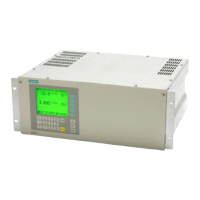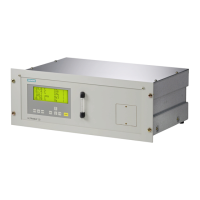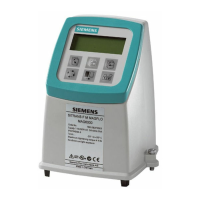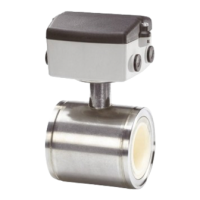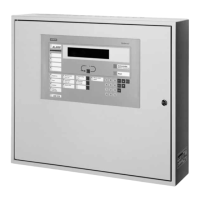Commissioning
6.2 Preparation for commissioning
FIDAMAT 6
56 Operating Instructions, 01/2019, A5E00222135-04
The degree of purity must be increased (e.g. up to 6.0) in the case of very low hydrocarbon
concentrations (< 1 ppm). Adapt the purity level of the zero gas to suit the measurement
task, e.g. by re-cleaning using a molecular sieve, activated-carbon filter or catalyst that is
connected directly to the gas inlets of the FIDAMAT 6 with purified metallic connections.
Make the supply gases available at a relative primary pressure between 2000 and 4000 hPa.
The pressure of the zero gas and calibration gas is 3000 hPa. Higher pressure will result in
increased gas consumption, while lower pressure may result in an incorrect calibration
because sample gas can additionally be drawn in.
Requirements for the combustion air
Hydrocarbons contained in the combustion air may impair the accuracy of measurements
because the hydrocarbon content is included in the measurement as an error. For this
reason, the combustion air must be as free of hydrocarbons as possible.
To minimize the effect of hydrocarbons in the combustion air on the measuring results, use
combustion air with the following quality:
3
Impurity:
Total hydrocarbons (oil residues and higher hydrocarbons
< 0.1 ppm
If you use compressed air as combustion air, purify it before the measurement, e.g. with a 2-
stage oil filter (activated carbon) or an air treater.
6.2.2.2 Sample gas
Note
The sample gases must be supplied to the analyzer dust
-free. To prevent condensation, it is
necessary in most applications to use a gas preparation system adapted to the measuring
task.
FIDAMAT 6-E: The sample gas is drawn in across a sample gas filter heated to a maximum
of 200 °C (392 °F) that acts as a secondary filter for the gas. The filter is made of sintered
metal (CrNi steel), has a pore width of 30 µm and an area of 3 cm
2
.
FIDAMAT 6-G: The sample gas is supplied unheated by a solenoid valve.
6.2.3 Checking for leaks
Before putting the device into operation each time and after every maintenance activity
affecting the flame ionization detector (FID) or the gas path, you must check the device for
leaks.
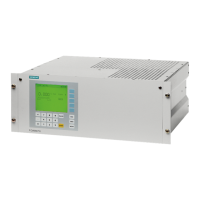
